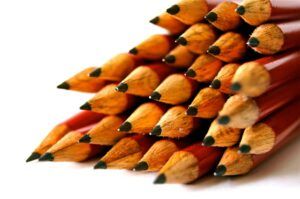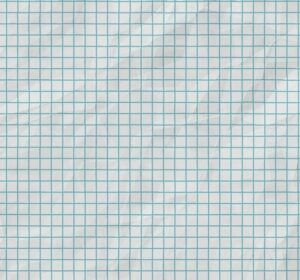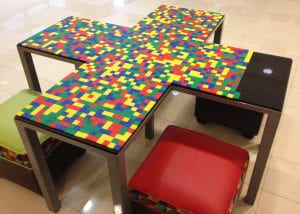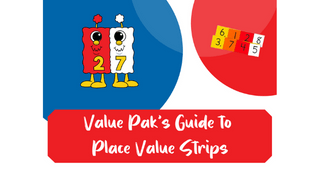Time for another sprinkling of Magical Math Dust! Shannon answers your questions with quick, practical advice, suggestions, and resources! This post features questions about word problems, counting collections, and area/perimeter.

Do you have a question?
Submit it here: https://goo.gl/CPbTZB
Word Problems
Question: What is the best way to teach 1st graders how to solve math word problems when the students struggle with reading? What is the best way to lead students to becoming independent with word problems? And, what is the best way to make math word problems an interactive learning experience?
 Answer: To answer this question, we have to look at the students developmentally. At the beginning in 1st grade, especially as we strive to create independent problem solvers, students really need strong guidance through solving word problems at first. New first graders should be hearing oral language story problems that incorporate real life situations, acting them out with concrete objects, drawing quick draws, and then being able to draw a number sentence to go along with it. Our Word Problems for Model Drawing Practice book (Grade 1) is very scaffolded for young children to be able to look at a problem, know how to create a sentence form, and draw pictures to represent what those problems are asking.
Answer: To answer this question, we have to look at the students developmentally. At the beginning in 1st grade, especially as we strive to create independent problem solvers, students really need strong guidance through solving word problems at first. New first graders should be hearing oral language story problems that incorporate real life situations, acting them out with concrete objects, drawing quick draws, and then being able to draw a number sentence to go along with it. Our Word Problems for Model Drawing Practice book (Grade 1) is very scaffolded for young children to be able to look at a problem, know how to create a sentence form, and draw pictures to represent what those problems are asking.
We recently did a whole blog series on problem solving, so I would definitely recommend checking that as a reference, particularly the post on problem solving in the early years, which includes information on writing with problem solving.
Ways to increase the interactivity of word problems:
- Math work mats. For example, if we were using the corral picture, there might be four pigs in the corral, how many legs are there altogether? This brings first graders into repeated addition as they figure out what 4 + 4 + 4 + 4 is.
- Number bond stories. Give children a number bond (try these number bond cards!) and have them create a story that might match it. If we had the number bond of 7 – 4 – 3, a child might draw a picture of birds, with seven birds in the tree, showing three of them flying away. This drawing would be representation of that number bond for addition and subtraction.
- A Math with Writing station. Use our Math Talk book, which provides quantitative pictures for kids to look at and be able to represent mathematically.
- A Math with Technology station. Use the problem solving game from ThinkingBlocks Jr. to help students be able to model and solve problems.
- Performance tasks. These are another higher level problem solving strategy that integrate the 8 Math Practices. Check our Math Resources page (https://sis4teachers.org/math-resources/) and click on the Writing/Problem Solving tab on the left.
- Bedtime Math. Super fun, corny videos for 1st graders to see how they relate to mathematics.
Another great interactive way to get students problem solving that is a little bit different than traditional word problems, but still maintains higher level rigor, is to do 3-Act math tasks. We have a whole section on 3-Acts (here, then click Writing/Problem Solving in the tab on the left) and quite a few blog posts (start with this one). They contain real life situations which prompt kids to interact and engage in discussion.
Counting Collections
Question: I will be implementing counting collections this quarter in my Kindergarten classroom. I’m not sure how to get them started without giving them too much information or too difficult of a task. Do you have any suggestions for a couple of good starter activities?
Answer:
 The hard part of doing counting collection is to make it more inquiry based and ask open ended questions. Kindergarten kids often expect leading questions, but you want to be asking them HOW they might go about looking at collecting. You want to ask them to “prove it,” to “show me how you got there,” and provide some extensions for more advanced students that are able to do their counting collection more quickly. For example:
The hard part of doing counting collection is to make it more inquiry based and ask open ended questions. Kindergarten kids often expect leading questions, but you want to be asking them HOW they might go about looking at collecting. You want to ask them to “prove it,” to “show me how you got there,” and provide some extensions for more advanced students that are able to do their counting collection more quickly. For example:
- Can you draw a picture to show how you counted?
- How many objects are in your collection? Can you prove that to me?
- Do you see a pattern in your counting?
- How many would you have if I gave you more objects?
- How many more objects would you need to have ____ objects?
- If you and your partner shared these objects equally, how many would you both get?
Observation is key as your kids are engaged in counting collections. How are they approaching their counting? Did they decide to line it up in 5s similar to how you’ve taught them with ten frames? Allow kids to use math work mats from the Math Salad Bar, like the five frame or the ten frame mat. Offer a Counting Buddy Jr. or a rekenrek to see if they want to associate their counting with some of the manipulatives they’ve used.
Area and Perimeter
Question: Every year my students struggle to know the difference between area and perimeter. What are some activities I can do to help them understand the difference?

Answer: One of my favorite things to do with area and perimeter is to take a piece of really large graph paper with square that are pretty big – almost like butcher paper or chart paper – but make sure it has grid lines. You’ll need a pretty large area, so you can even tape a few pieces together if you need to make it as big as you like (you can start with 60 squares or go with even more!). Put it on the wall and draw a line around the number boxes you want to make your area. Let’s say you had a total of 60 boxes inside the line.
Approach this like a number talk, really seeking to know what kids understand about area and perimeter. Tell the kids, “I have this square, and I want to figure out how much space is inside it.” You can give them lots of different colored markers and see what they come up with! They might say, “Oh! You can count the squares!” You might respond with something like, “Wow, that might take kind of a long time…” Some might say that if you count the squares around the shape it will tell you how many are in it. Kids might divide the box into groups of 10 and then skip count by 10s, they might divide it horizontally or vertically.
The whole idea is to make it inquiry-based. You’ll be looking a little bit at multiplication, but mostly at the understanding of what area is as opposed to perimeter. Prompt kids to think by asking things like “What is the word we use for talking about the space in the middle?” Ask, “what is it about the outside of it that would tell me about the perimeter?” You can gauge their understanding of area and perimeter as you ask the questions and listen to their responses. Instead of just teaching and telling them about area and perimeter, let them explore it and think about it as they interact with the grid paper.
 Another way to do this is through a 3-Act Task. This one by Ralph Fletcher called Piles of Tiles has to do with area and I love that it is inquiry-based. In the beginning (the first act), he shows the space inside of a table that’s shaped like plus sign. He starts to fill in 1” square tiles on the table. The question we want kids to eventually get to is “Does he have enough 1” square tiles in the large bag he has to cover the whole area of table?” Three-Act Tasks naturally promote inquiry, with students first talking about what questions they would need to ask to even figure out the area of the table (the task ends up telling them how many rows/columns it is).
Another way to do this is through a 3-Act Task. This one by Ralph Fletcher called Piles of Tiles has to do with area and I love that it is inquiry-based. In the beginning (the first act), he shows the space inside of a table that’s shaped like plus sign. He starts to fill in 1” square tiles on the table. The question we want kids to eventually get to is “Does he have enough 1” square tiles in the large bag he has to cover the whole area of table?” Three-Act Tasks naturally promote inquiry, with students first talking about what questions they would need to ask to even figure out the area of the table (the task ends up telling them how many rows/columns it is).
You want to help kids develop a conceptual understanding of area and perimeter, not just to know area as a procedure of length times height or understanding perimeter as just the part around the edge. Try to take an 8 Math Practices approach to it by getting kids to actually have to use the 8 Math Practices to understand area and perimeter. I find that this way is more effective to help kids understand the conceptual differences between the two than just teaching and talking.



